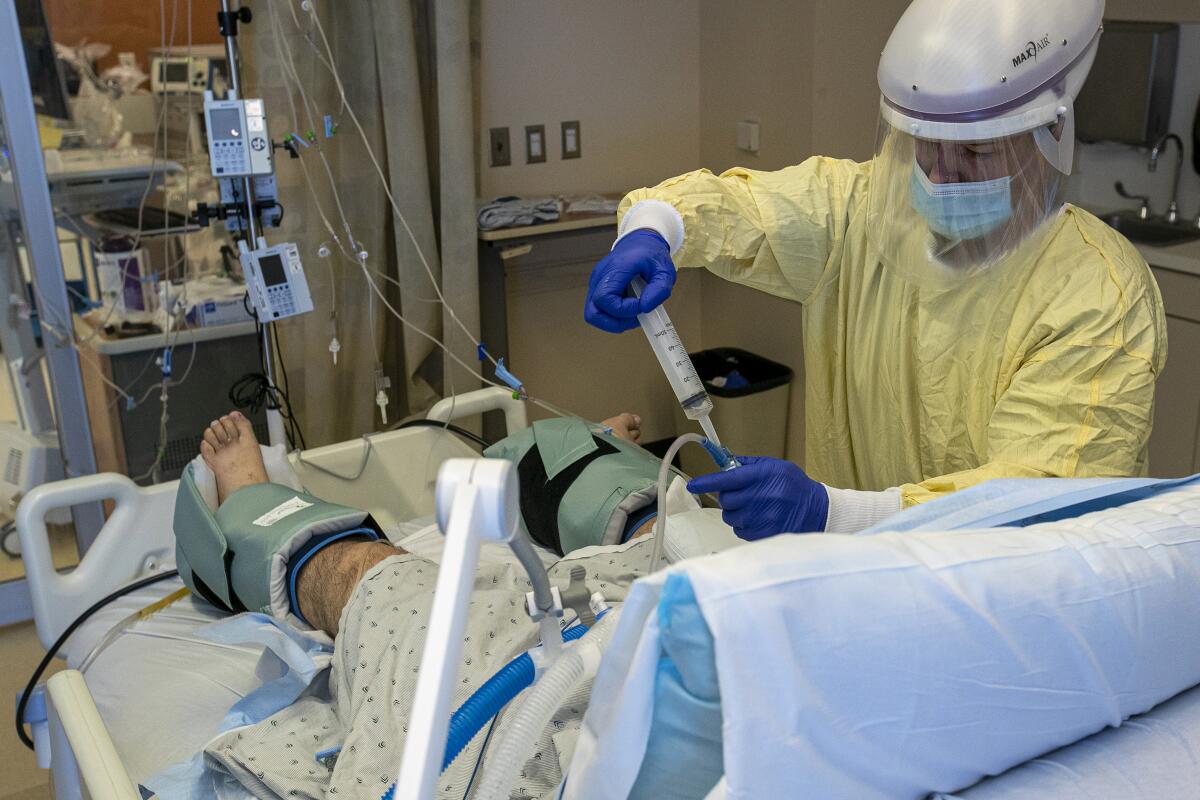Column: Weâre facing a tidal wave of COVID-related disability cases, and weâre not ready

Richard Weishaupt, a disability attorney at Community Legal Services of Philadelphia, has just met with his first client to have whatâs known as âlong-haulâ COVID-19 â symptoms that persist beyond the couple of weeks in which the infection typically runs its course.
âThat wave is just starting,â he said.
Many disability advocates share Weishauptâs uneasiness. The pandemic threatens to strike Social Securityâs disability program and its beneficiaries in multiple ways that play into the systemâs weaknesses and its target populationâs vulnerabilities.
âThe system is designed to reject people. Itâs not designed to catch everyone who is disabled and in need of help.â
— Matthew Cortland, disability advocate
Long-haul COVID patients tend to exhibit the kinds of symptoms about which disability case reviewers have historically been skeptical, if not downright hostile. These include chronic fatigue, nonspecific body and nerve pain, headaches and a condition of persistent confusion known as âbrain fog.â
Those living with these symptoms have had little opportunity to apply for disability benefits, because Social Security field offices have been shuttered as an anti-pandemic measure since March 17. Although some are eligible to apply online, applicants often need face-to-face help navigating the complexities of the disability program.
It also has been a problem for applicants for Supplemental Security Income, a low-income assistance program that is funded by the government separately from Social Security but is administered by it. The vast majority of SSI applicants are disabled.
Get the latest from Michael Hiltzik
Commentary on economics and more from a Pulitzer Prize winner.
You may occasionally receive promotional content from the Los Angeles Times.
Many donât qualify for online applications. SSI applications have fallen by more than 30% over the last year, a drop attributed almost exclusively to the office closures.
Advocates expect the field offices to be inundated with backed-up applications once they reopen, causing costly delays for SSI and disability applicants alike.
No one has been able to estimate the size of the wave that may be building. Medical experts say 10% of COVID patients develop long-term symptoms. Some studies place the figure higher â with up to 15% exhibiting âsignificant pulmonary/cardiac damageâ (that is, of the lungs and heart), and 5% suffering from long-term symptoms related to treatment in intensive care units, or post-ICU syndrome.
Appearing Sunday on the CBS program âFace the Nation,â President Trumpâs budget director, Mick Mulvaney, engaged in a drive-by shooting of some the nationâs neediest and most defenseless people: the disabled.
If that were true of the 29 million U.S. COVID cases thus far, and all applied for disability, it would suggest that as many as 5.8 million new disability cases would appear. About 15% of the disability rolls comprise spouses and children of disabled workers, bringing the total to as many as 6.7 million new cases.
That would be an extreme development. But even a portion of that would overwhelm the disability program, which currently serves more than 8.1 million workers and about 1.5 million of their dependents.
One saving grace of the current political climate is that the White House is no longer occupied by an administration displaying outright hostility to those seeking disability benefits.
Back in March 2017, Trumpâs budget director, Mick Mulvaney, staged what we called a âdrive-by shootingâ aimed at some of the nationâs most defenseless citizens.
Appearing on CBSâ âFace the Nation,â Mulvaney questioned whether the disability program was even a legitimate part of Social Security, though it was enacted in 1956, under President Eisenhower. Mulvaney called it Social Securityâs fastest-growing program and labeled it âwasteful.â
These were both lies: Disability rolls were actually falling, and its error rate of less than 1%, which included both overpayments and underpayments, was among the lowest in government.
The Trump White House accepted the conservative myth that disability benefits are easy to obtain. The truth is exactly the opposite.
We pointed out back in March that Trump budget direct Mick Mulvaney displayed an alarming ignorance about Social Security disability benefits during an appearance on the CBS program âFace the Nation.â
The complex application process can take months, and only 40% of applicants end up with benefits, even after appeals. Once approved, they have to wait five months for their first check.
Applicants must show that theyâre unable to earn more than $1,310 a month, or $15,720 a year, through âsubstantial gainful activityâ and that their condition is expected to last at least a year or result in death.
Things are especially hard for those with conditions that canât be assessed through objective screens, such as blood tests and medical imaging.
âPain, fatigue and mental illness donât show up in tests,â Charles T. Hall, a North Carolina disability lawyer, told me.
âPeople with disabilities that are harder to substantiate with medical evidence on paper are the people who systematically get left out, no matter how disabled they really are,â said Rebecca Vallas, a veteran disability advocate now at the Center for American Progress.
Nor is disability a route to easy living. The average benefit is $1,277 a month, which is below the federal poverty line for any household with two or more members.
Vallas points out that those who donât have enough of an employment history to qualify for Social Security disability â including many low-income workers and gig workers not paying into the program â could be especially vulnerable to being left on their own.
What makes disability advocates nervous about the systemâs treatment of long-haulers is their experience with its approach to chronic fatigue syndrome, for which there is no lab test or biological marker.
The syndrome was first defined by the Centers for Disease Control and Prevention in 1994. But it was not until 20 years later, in 2014, that Social Security published guidelines for its diagnosis as a disabling condition, known as a âlisting.â
â60 Minutesââ shameful attack on the disabled
Even then, the guidelines required months or even years of evidence from licensed doctors, sometimes supplemented with testimony from family members or former employers. As many as 75% of those diagnosed with the condition are âunable to work or attend school regularly,â according to medical studies.
âThe system is designed to reject people,â said Matthew Cortland, a Massachusetts-based disability attorney and policy analyst. âItâs not designed to catch everyone who is disabled and in need of help. It is a fundamentally adversarial system.â
The disability community has been urging Social Security to move proactively to develop guidelines for evaluators and the judges ruling on appeals so they can recognize COVID long-haul cases when they appear.
The agency has begun to âearmarkâ apparent long-haul cases so it can create a database of common symptoms.
The agencyâs officials heard from several experts in COVID diagnostics Nov. 18, at the most recent of its regularly scheduled National Disability Forums, but none of the published presentations had specific recommendations for how the disability program should manage COVID cases.
The agency told me by email that it is âable to evaluate COVID-19 casesâ through existing rules. âDisability evaluations are based on function, not diagnosis,â the agency said, meaning that an applicant who canât work should receive benefits, whatever the reason.
But thatâs not how the system operates in practice, since the evaluation covers the likelihood that the applicant will be able to return to work within a year.
The agency said it is consulting with the National Academies of Sciences, Engineering and Medicine and other experts to explore the potential long-term health and work effects of COVID-19.
âResearchers are still learning about the disease and we will continue to look at our policies as research evolves,â it said.
For disability advocates, thatâs both encouraging and discouraging. âTheyâre still in this scratching-their-head period,â said Weishaupt, âbut at least theyâre marking those cases, so that six months down the road, they can pull up all those COVID cases and look at them again.â
But time may not be on their side. âSooner or later, the long-haulers are going to start showing up,â Weishaupt said.
More to Read
Inside the business of entertainment
The Wide Shot brings you news, analysis and insights on everything from streaming wars to production â and what it all means for the future.
You may occasionally receive promotional content from the Los Angeles Times.











